The Porcelain Cargo of the East Indiaman Gotheborg
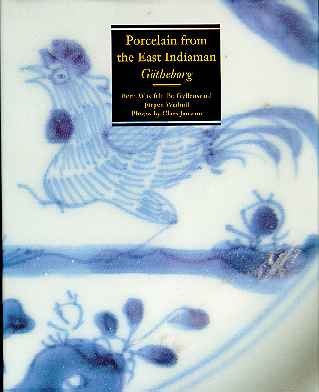 It is the morning of 12 September 1745. The sails of the East Indiaman Götheborg swell with a brisk southwest breeze which will carry her the last few miles to her home port, Gothenburg, on the west coast of Sweden. Thirty months have passed since she left Gothenburg bound for China to buy tea, spices, silk and porcelain - wares that will be sold for a tidy profit upon her return.
It is the morning of 12 September 1745. The sails of the East Indiaman Götheborg swell with a brisk southwest breeze which will carry her the last few miles to her home port, Gothenburg, on the west coast of Sweden. Thirty months have passed since she left Gothenburg bound for China to buy tea, spices, silk and porcelain - wares that will be sold for a tidy profit upon her return.
The trip has been arduous, and many seamen have perished. Now at last she is almost home with her precious cargo.
Then, suddenly, the unspeakable happens. At full speed the Götheborg runs aground on a well-known underwater rock a few thousand yards short of her homeport. Disaster has struck.
Yet it is thanks to this disaster that we are now able to dive back in history some 250 years. In December 1984 Anders Wästfelt and some friends rediscovered the wreck site of the lost East Indiaman Götbeborg. In 1985 underwater excavation of the site began. The results of the first years' efforts have far exceeded expectations concerning what might lie hidden in the muddy bottom.
The porcelain recovered from the Götbeborg has aroused great interest among both specialists and laymen. These finds have made it possible to systematically analyze, document and classify the porcelain wares carried from China by an East Indiaman. This information is of value in helping to date eighteenth century Chinese export porcelain.
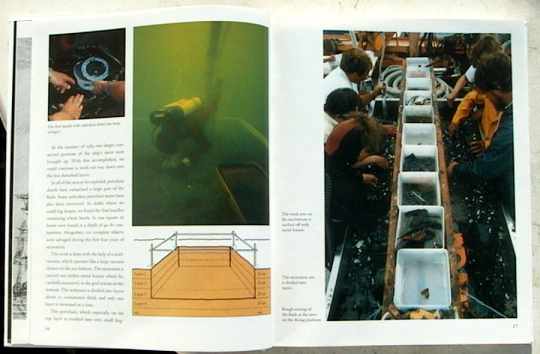
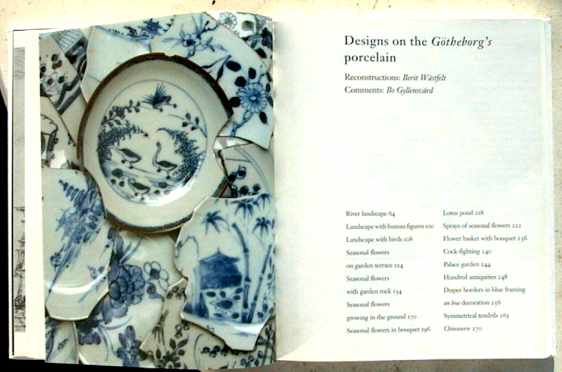
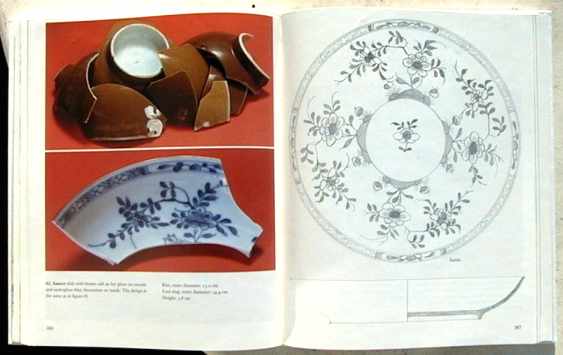
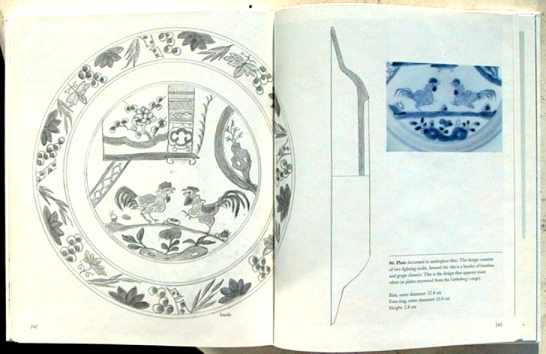
CONTENTS:
Professor Jörgen Weibull: The Swedish East India Company and the final voyage of the East Indiaman Götheborg 1743-45.
Berit Wästfelt: The Porcelain Cargo of the Götheborg. The results of her work reconstructing the variety of the painted designs found on the blue and white pieces.
Professor Bo Gyllensvärd explains the sources and symbolic meanings of these designs.
All text in English. 282 pages. 160 photos of porcelain and from the excavation. 100 pages with drawings illustrating the different blue and white porcelain designs found during the excavation.
 Back to Chinese Porcelain Collectors Page
Back to Chinese Porcelain Collectors Page
 It is the morning of 12 September 1745. The sails of the East Indiaman Götheborg swell with a brisk southwest breeze which will carry her the last few miles to her home port, Gothenburg, on the west coast of Sweden. Thirty months have passed since she left Gothenburg bound for China to buy tea, spices, silk and porcelain - wares that will be sold for a tidy profit upon her return.
It is the morning of 12 September 1745. The sails of the East Indiaman Götheborg swell with a brisk southwest breeze which will carry her the last few miles to her home port, Gothenburg, on the west coast of Sweden. Thirty months have passed since she left Gothenburg bound for China to buy tea, spices, silk and porcelain - wares that will be sold for a tidy profit upon her return.




